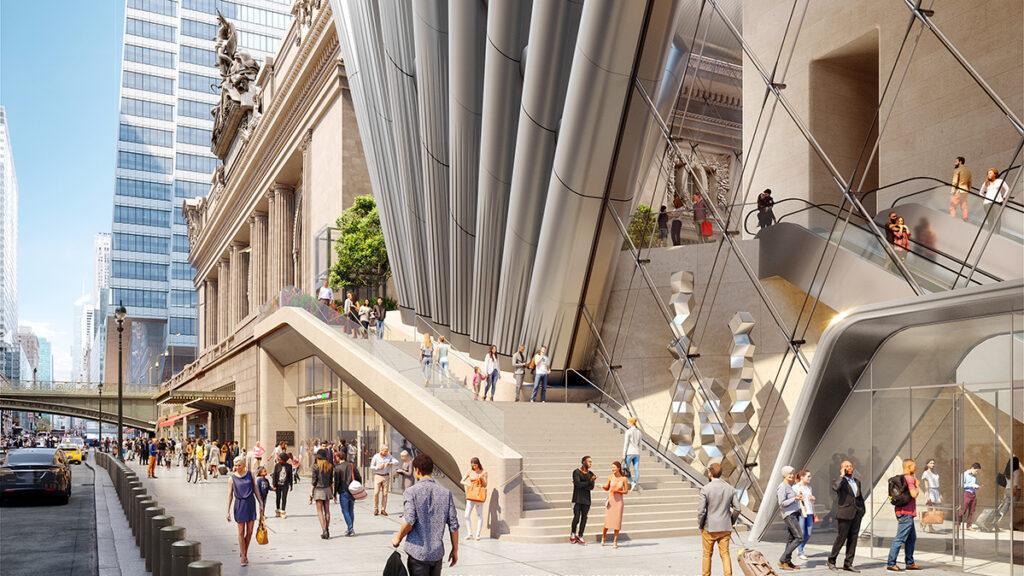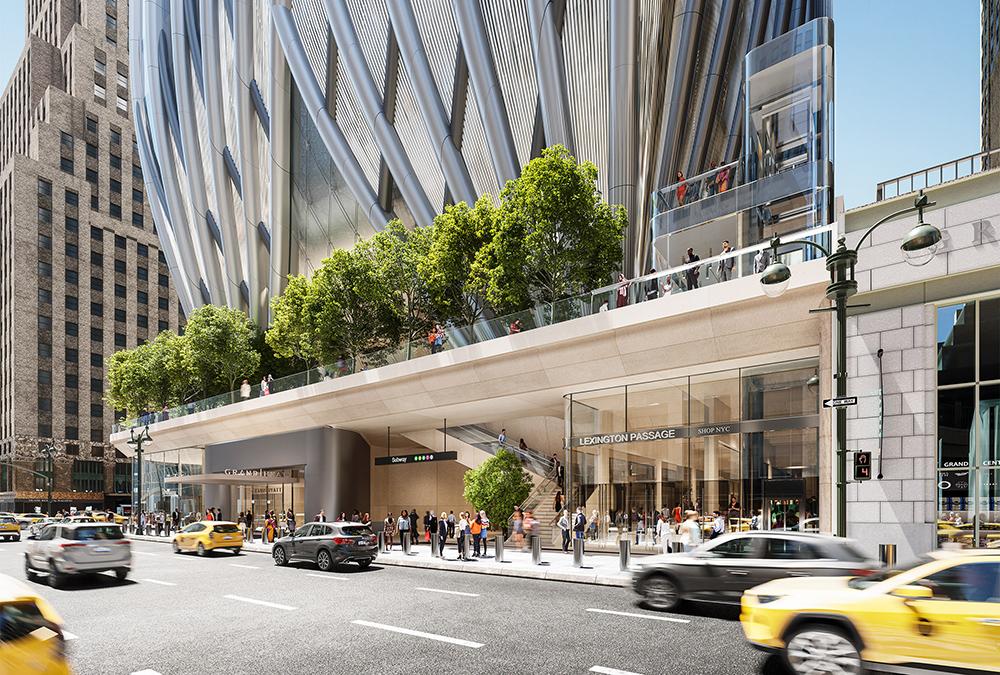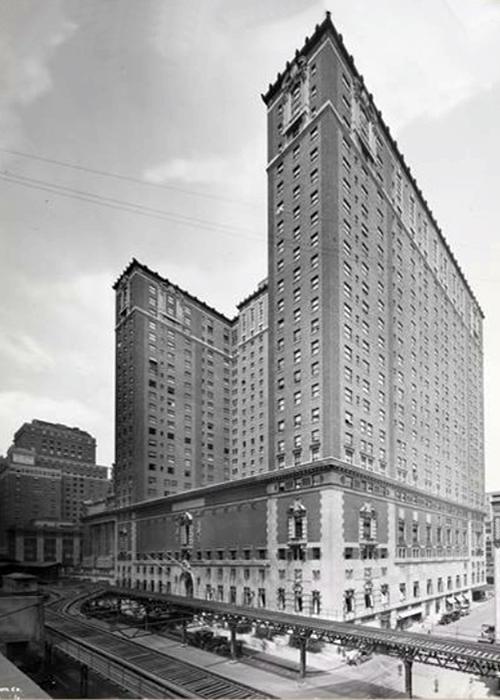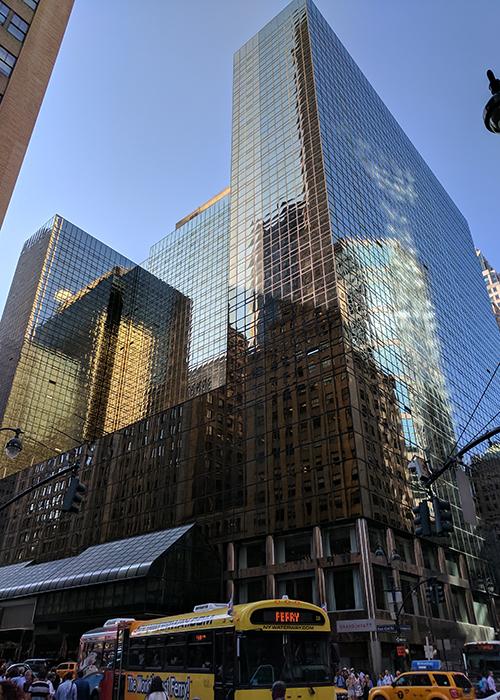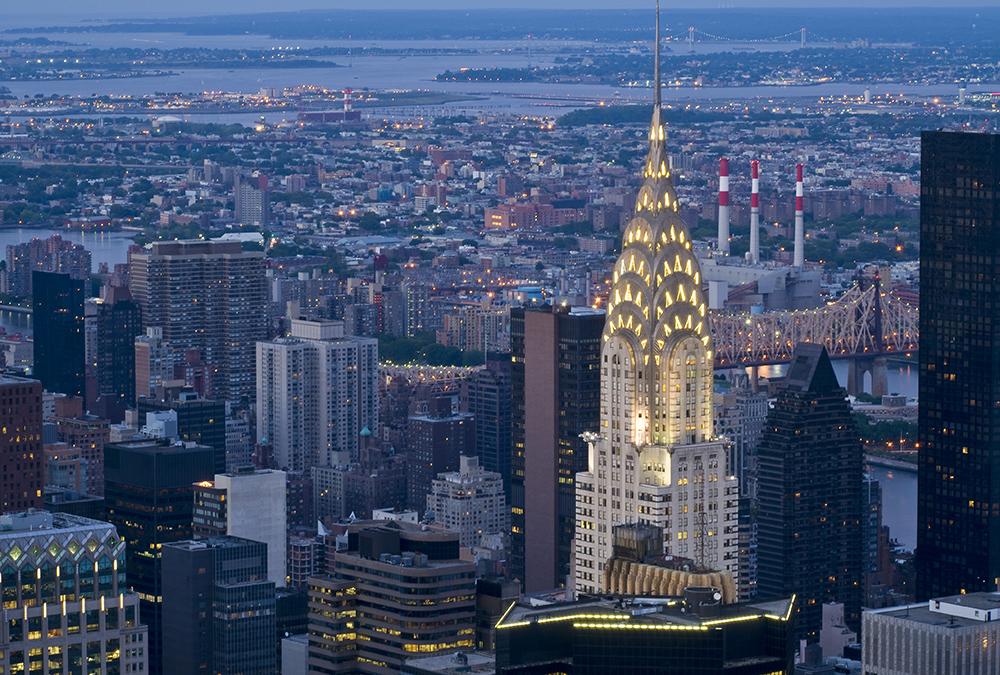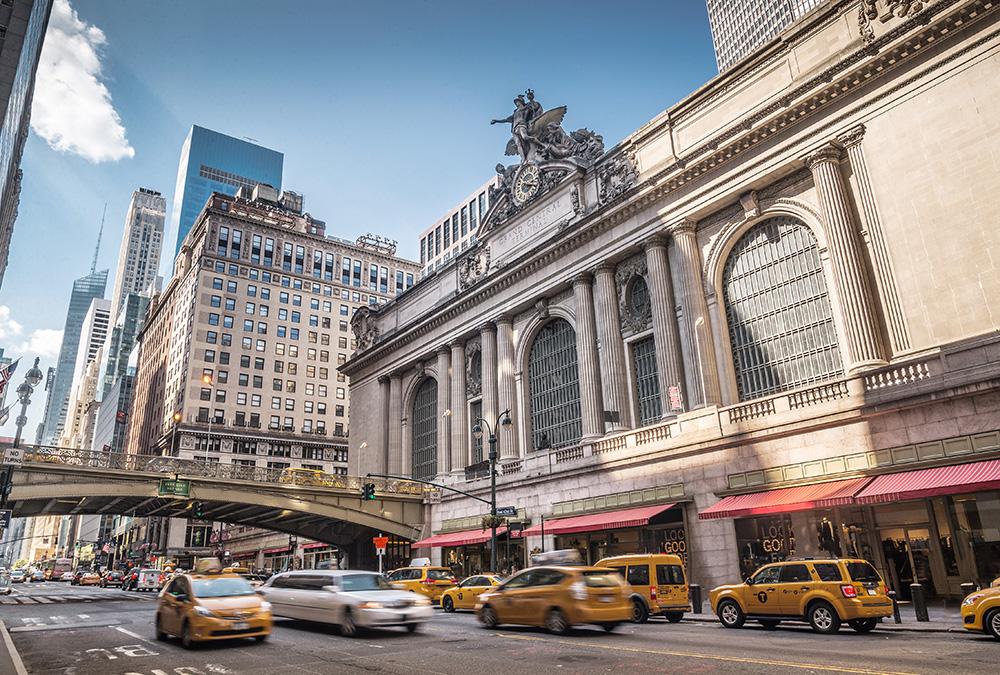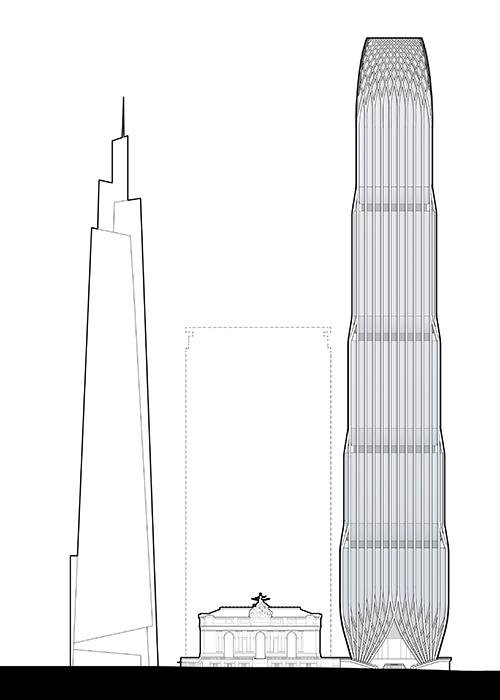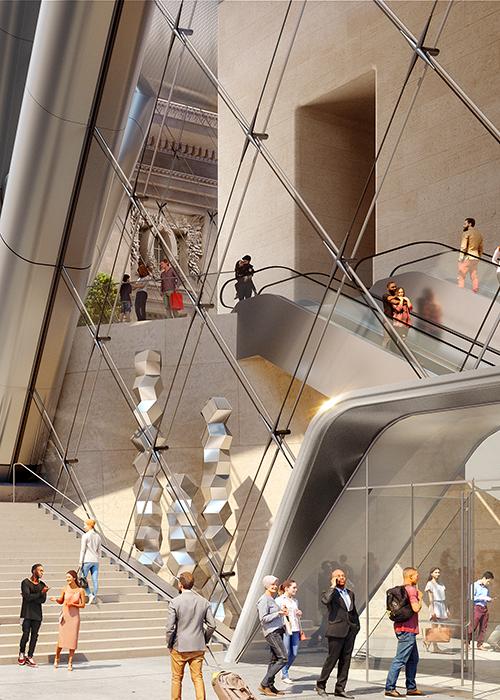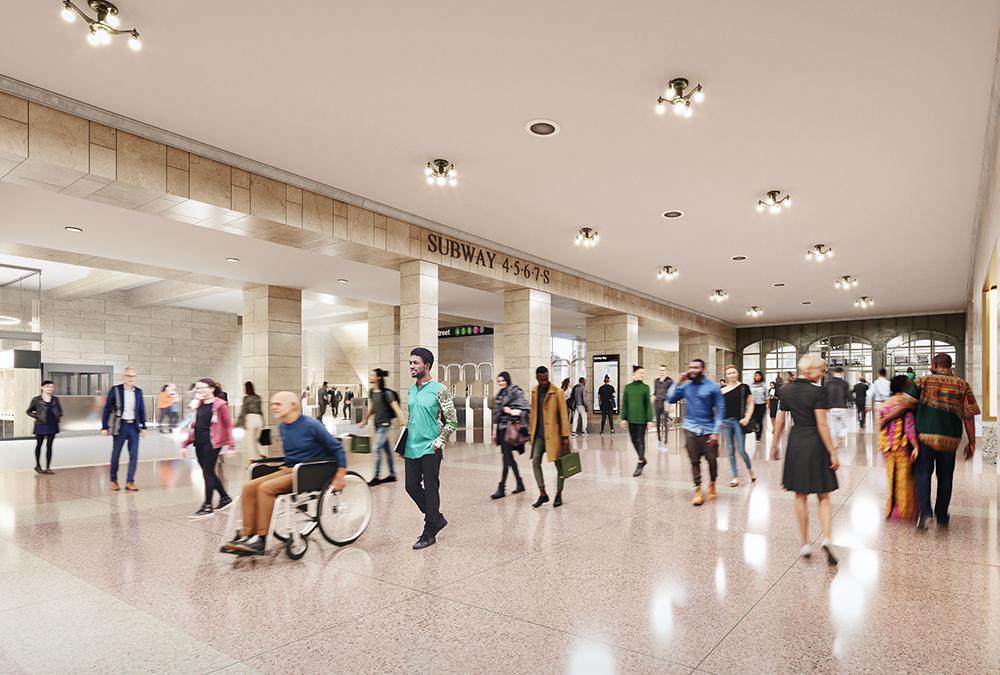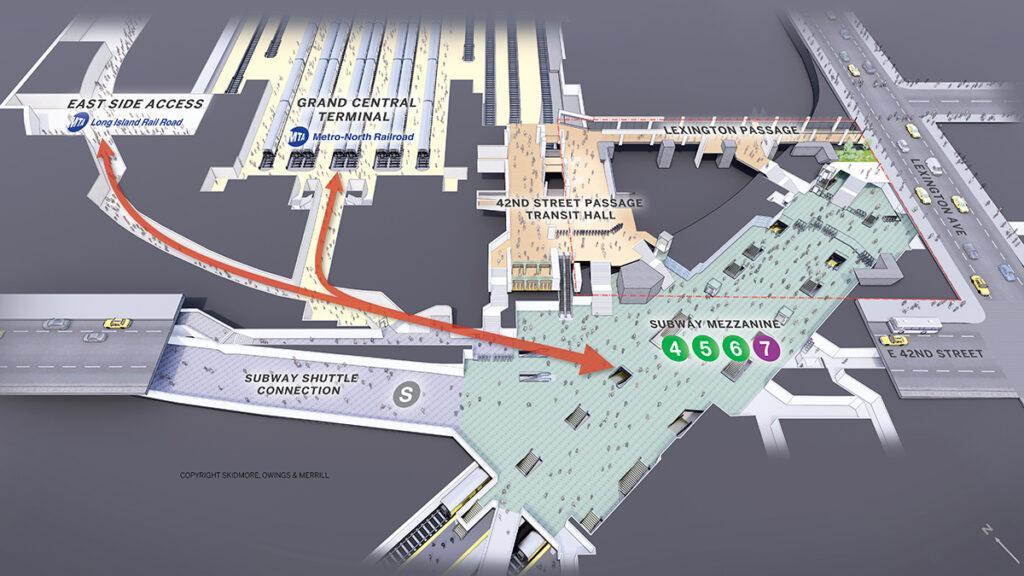Striking design to replace Trump’s Grand Hyatt
Labelled presumptuous, sinister and obstructive by many New York residents, Donald Trump’s Grand Hyatt in Manhattan is set to become a thing of the past. Its replacement promises to be a sky-high improvement, according to the city authorities.
“Uplifting” isn’t the first word that springs to mind when you look at the Grand Hyatt New York. Architecture critics have called the building presumptuous and obscure, a structure cloaked in dark glass. Travellers in the Grand Central Terminal and the bustling subway station aren’t especially passionate about it either. The Grand Hyatt was Donald Trump’s first major construction project in Manhattan. Like a massive bulk, it sits adjacent to and on top of the transport hub. But the obstacles created by the building are even encountered far down underground. They cause huge congestion and structural problems in the transportation network. However, this is all due to end.
New tower for a better future
Next year, the Grand Hyatt is set to become a thing of the past. Developers RXR Realty and TF Cornerstone have pooled their resources to redesign the site. In a joint venture, they will be constructing a new, modern, sustainable and mixed-use tower. The multi-billion-dollar project has been designed by renowned architectural firm Skidmore, Owings & Merrill (SOM). And so great things can be expected – in every respect.
The plans for the new project adhere to the East Midtown Rezoning guidelines drawn up by the city authorities. Called 175 Park Avenue, the project is designed to create public space and make considerable improvements to the surrounding infrastructure. It is scheduled to open in the year 2030. Most importantly, this site’s difficult past is going to have a happy ending. In the midst of many famous sights, the project will make this part of Manhattan truly “great” again for the city and its people.
A colourful past
SOM’s designs are not the only reason why this project has attracted such huge interest. Another main reason is its past, as mentioned above. So let’s take a brief look at its history.
Illustrious predecessor
In the place where the Grand Hyatt still stands, guests originally enjoyed the comfort of the Commodore Hotel. Designed by Warren & Wetmore, it was owned by Bowman-Biltmore Hotels and opened in 1921. A success story lasting decades, the hotel was part of Terminal City – a complex with magnificent hotels and offices linked to the Grand Central Terminal, owned by the New York State Realty and Terminal Company (NYSRTC).
But in the late 1970s things took a turn for the worse. The decline affected both New York Central Railroad (NYCRR) as the hotel operator, and also the Commodore Hotel itself. What happened next is the subject of investigations. Donald Trump wanted the old hotel, and he succeeded in buying it even though he didn’t have enough money. With an unprecedented tax break and the renowned Hyatt Group as a partner.
Converted to the Grand Hyatt
Rumour has it that the Trump Organization spent 100 million US dollars on rebuilding the hotel, wrapping it in a reflective glass facade. Only the foyer of the large ballroom was retained, with its stucco and neoclassical columns. The former Commodore reopened in 1980 as the Grand Hyatt.
An “outrage to the cityscape”
Architecture expert Francis Morrone’s opinion of the building in the Architectural Guidebook to New York City is quite frank: “The exterior of the Grand Hyatt is a mirror box, and an utter and inexcusable outrage to the cityscape of East 42nd Street, situated as it is between two masterpieces, Grand Central Terminal and the Chrysler Building.” He describes the brick and masonry structure of the Commodore as “modest and deferential”. With Trump’s conversion being the exact opposite: “The Grand Hyatt imposes its garish vacuity with a painful lack of concern about the way it relates to one of the architecturally most-significant streets in America.”
The authorities and partner Hyatt also had their hands full with the former US president’s first major project in New York. Nine years after the conversion, the state demanded rent payments totalling millions of dollars. An investigation revealed that Trump had approved “unusual” accounting.
In 1993 Trump accused Hyatt owner Jay Pritzker of blackmail and filed a lawsuit against him. Pritzker then sued Trump in 1994, and in 1996 the partnership came to an end when Pritzker’s company bought Trump’s half interest. In 2007 and 2008 the Grand Hyatt received the Award of Excellence from the Corporate and Incentive Travel magazine in recognition of its renovations.
Enjoying good prospects
But let’s return to the future of this scandal-ridden property. If the design by Skidmore, Owings & Merrill goes ahead, the hotel will be replaced by the new 175 Park Avenue. The building will top out at about 500 metres, with up to 83 storeys. As a mixed-use tower, it will provide about 195,000 square metres of office space. Retail outlets on the ground and lower ground floors will occupy at least 900 square metres. And the global Hyatt Group will use around 42,000 square metres of the new building for a hotel with up to 500 rooms.
The team of architects at SOM has made every effort to create a harmonious relationship between the new building and its surroundings: the tower’s axes are balanced against the Beaux-Arts symmetry of the Grand Central Terminal. High-performance glass and a lattice of elegant columns are planned for the facade. This structural lattice converges at the base, creating openings for frameless glass panels.
Showing respect for the Grand Central
The office lobby on the second floor will receive its own transparent shell. Besides opening up new visual axes at street level, this will also reveal the east facade of the Grand Central Terminal. The stone-clad core of this skyscraper adds to the Terminal’s materiality and reflects its iconic design in an “interplay of solids and voids”.
Crowning the new building
The structural lattice divides into a pattern that integrates elements of the Grand Central Terminal design. Featuring a setback across four storeys and thus recalling the design of the earliest New York skyscrapers, this maximizes the sunlight on the streets below. At the very top of 175 Park Avenue, the interlaced steel latticework forms a shining “crown”.
SOM’s design also integrates state-of-the-art sustainability measures. These include a highly efficient building shell, needs-based ventilation and innovative heat recovery. The design team is also checking how to keep CO2 emissions as low as possible.
Benefits for the surrounding area
While Trump’s Grand Hyatt was more of a hindrance, the new tower is designed to improve the open public space and local infrastructure. Besides fulfilling the East Midtown Rezoning goal of modernizing outdated property with buildings designed for the post-COVID era, its developers say that 175 Park Avenue will also generate private investment worth hundreds of millions of dollars, which will also benefit train and subway users.
Long-awaited improvements
The experienced architects at SOM were also responsible for the concept that will take the pressure off the transport hub. The Grand Hyatt is situated directly above three subway lines, and its supporting girders conceal the mezzanine level of the subway station. Removing the building paves the way for eagerly anticipated improvements. These include new, optimized entrances to the subway and Terminal, as well as linking the railway and subway stations with short, barrier-free routes.
In addition, Metro North commuters with onward travel by subway train currently have to walk from the platform up into the Grand Central Main Concourse and through the crowded 42nd Street Passage. 175 Park Avenue will save them time and trouble by providing a short loop connection. The project also includes a new transit hall to remedy the nerve-wracking overcrowding in the Passage. High ceilings and glass skylights will create a friendly atmosphere in the spacious foyer.
Elevated public space
The project will also create roughly 2,230 square metres of elevated outdoor public space. Two large staircases and barrier-free elevators on 42nd Street will take visitors up to open-air terraces. These wrap around the building and are set to become relaxing oases in the middle of urban hustle and bustle – and they will offer spectacular views.
Improving quality of life in the city
As a replacement for Trump’s unpopular Grand Hyatt, this exciting project is in line with forecasts by leading international architects. Future-based traffic concepts, time-saving routes to work, outdoor public spaces and sustainable new builds are an absolute necessity for urban quality of life. It may be true that 175 Park Avenue seems less spectacular than the new developments in Manhattan’s Hudson Yards. But the people who live or work in the Big Apple are likely to appreciate it.
Text: Elisabeth Schneyder
Translation: Rosemary Bridger-Lippe
Images: Miyis SPRL / Skidmore, Owings & Merrill, EKOO Media Inc. / Skidmore, Owings & Merrill, Gettyimages, Byron Company/wikipedia, Jhw 57/ wikimedia
